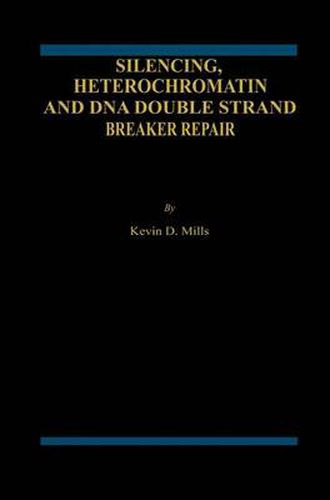Readings Newsletter
Become a Readings Member to make your shopping experience even easier.
Sign in or sign up for free!
You’re not far away from qualifying for FREE standard shipping within Australia
You’ve qualified for FREE standard shipping within Australia
The cart is loading…






This title is printed to order. This book may have been self-published. If so, we cannot guarantee the quality of the content. In the main most books will have gone through the editing process however some may not. We therefore suggest that you be aware of this before ordering this book. If in doubt check either the author or publisher’s details as we are unable to accept any returns unless they are faulty. Please contact us if you have any questions.
The field of DNA repair is vast and advancing rapidly. Recent investigations have begun to focus on the involvement of chromatin in the repair of broken DNA. Although I have no doubt that many breakthroughs in our understanding of chromatin, chromatin regulation, and DNA repair lie in our future, presently this is a new line in inquiry. As such there are many, many unanswered questions. Indeed, most of the correct questions have probably not even been asked yet. Here I have attempted to present a review of some of the current body of knowledge that may prove relevant to understanding the role of chromatin in DNA repair. Because the volume of research, and the relevant findings, come from a staggering array of labs, systems, and ideas I have focused primarily on findings developed from the study of the budding yeast Saccharomyces cerevisiae. Unfortunately, this means that I have left out a great deal of information. It is my hope, however, that the information I do detail, particularly in Chapter 1, will give a flavor for the scope of the problem and perhaps highlight some of the interesting directions this field is taking, or may one day take. I would also point out that the primary research that is presented herein is not in any way meant to represent the comprehensive scope of research being performed. To understand DNA repair will require investigation from innumerable labs, performed by innumerable researchers, moving in unexpected directions.
$9.00 standard shipping within Australia
FREE standard shipping within Australia for orders over $100.00
Express & International shipping calculated at checkout
This title is printed to order. This book may have been self-published. If so, we cannot guarantee the quality of the content. In the main most books will have gone through the editing process however some may not. We therefore suggest that you be aware of this before ordering this book. If in doubt check either the author or publisher’s details as we are unable to accept any returns unless they are faulty. Please contact us if you have any questions.
The field of DNA repair is vast and advancing rapidly. Recent investigations have begun to focus on the involvement of chromatin in the repair of broken DNA. Although I have no doubt that many breakthroughs in our understanding of chromatin, chromatin regulation, and DNA repair lie in our future, presently this is a new line in inquiry. As such there are many, many unanswered questions. Indeed, most of the correct questions have probably not even been asked yet. Here I have attempted to present a review of some of the current body of knowledge that may prove relevant to understanding the role of chromatin in DNA repair. Because the volume of research, and the relevant findings, come from a staggering array of labs, systems, and ideas I have focused primarily on findings developed from the study of the budding yeast Saccharomyces cerevisiae. Unfortunately, this means that I have left out a great deal of information. It is my hope, however, that the information I do detail, particularly in Chapter 1, will give a flavor for the scope of the problem and perhaps highlight some of the interesting directions this field is taking, or may one day take. I would also point out that the primary research that is presented herein is not in any way meant to represent the comprehensive scope of research being performed. To understand DNA repair will require investigation from innumerable labs, performed by innumerable researchers, moving in unexpected directions.